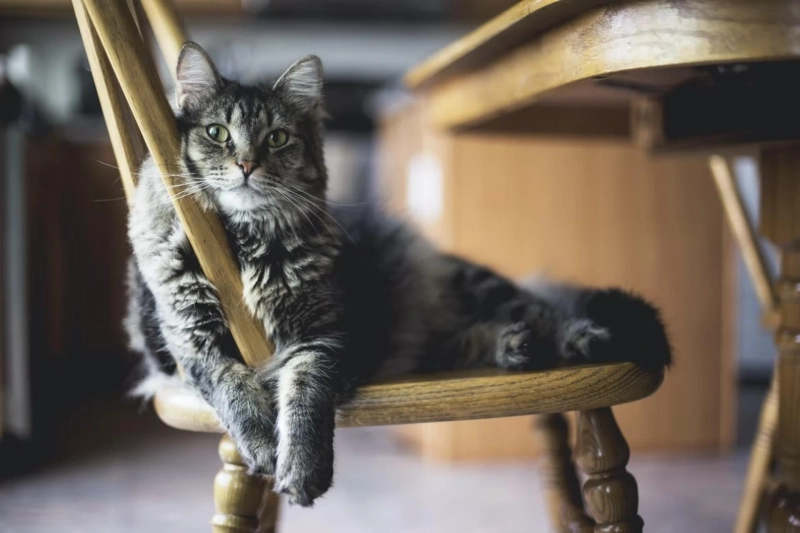Choosing a cat is something you and your kids will always remember. It’s a fun decision, but an important one, and it shouldn’t be made on a whim. Indoor cats live on average 13-17 years, so your new feline friend will be in your lives for many years to come.
Before agreeing to take on a cat, consider the commitment you are making. Be honest with yourself - is your living situation suitable and stable enough to take on a cat? Can you afford it? Will your cat get along with other pets you have? Has anyone in your family got allergies? Before making the decision to look for a cat, do your homework and ask yourself the tough questions. Make sure you can support the cat and provide her with a loving, safe environment for her whole life.
Once you’re set with your decision, you can start looking for the perfect cat for your family.
Adoption as an option
There is no right or wrong answer when it comes to deciding whether to adopt a cat or buy a kitten. What’s important is that you research your choices thoroughly.
A number of things are likely to influence your decision. You might love the idea of saving one of the 860,000 cats that are euthanized each year of the 3.2 million cats found in American shelters. You might not have the time to dedicate to house training a kitten and prefer the idea of an older cat that’s more ‘responsible’. Then again, you might be set on finding a particular breed that’s not commonly found in a shelter.
Whatever your decision, base it on active research, which will help to ensure your pet will be happy with you and that will be happy with your cat.
5 considerations when finding the right cat for your family
Cats make wonderful companions. Their entertaining antics and affectionate behaviours have allowed them to be loved by millions of owners for thousands of years. Easily house trained and relatively low maintenance, cats make good indoor pets and most will readily adapt to a variety of households. Any cat can make for a great pet with the right care, but when you have a family there are five things you should consider…
1. The family dynamics
Your cat will become another member of your family, therefore it’s important to consider all existing members before adding another. Children love to play with cats but young children will need to be supervised to avoid inadvertent mishaps. Toddlers can hurt kittens by hugging them too tightly and the abrupt movements of young children can frighten a cat and cause it to react negatively. Supervision between pets and children is a priority to keep them safe and prevent problems, so make sure you have the time to keep everyone safe.
Think about allergies too. With dirt and hair left behind by your cat, you’ll be required to keep your home clean. The messier the cat the more cleaning products you’ll use, which can contain harmful and toxic chemicals. If you want to avoid risking exposure to allergens, consider short-haired breeds and all-natural cleaning solutions.
2. Difference of breeds
Cats are made up of unique physical characteristics and different personalities and while evidence can’t pinpoint a cat’s behaviour based solely on nurture vs nature, there are certain breeds that prove popular with cat lovers. Some are domestic, some are purebred and some are hybrid - crossbred with wild feline varieties. Popular breeds include:
SiamesePersianBengalBirmanHimalayanAmerican ShorthairMaine CoonRagdollAbyssinianOriental ShorthairFamilies with kids should avoid breeds like Chausies, Toygers and Savannahs, which have streaks of unpredictability due to their wildcat traits.
3. The health of a cat
No matter where you get your cat, how old your cat is or what breed of cat you get, choosing one that’s in good health can save you lots in trouble and vet bills. Treatment for cats can be costly, which is why you should also consider taking out pet insurance.
A healthy cat can generally be identified by its overall appearance and behaviour. Healthy cats have clear eyes, a groomed coat, and are appropriately active for their age. They have a lifted or twitchy tail, they look relaxed in their movements and sleeping positions, and their ears are forward-facing, indicating they are happy. Healthy cats have hearty appetites, playful habits and
often like to chat or purr.
4. The cat’s background
The more compatible your cat is with your family the more comfortable life will be for both pet and pet owners. Most cats are pretty adaptable, but avoiding potential conflicts is always best. If you have a dog, ask if the cat has been around dogs in its past. Was it happy with those dogs or did it show fear? The person who is currently caring for your cat should hopefully have some great insights to share with you if only you ask the questions.
5. Your personal connection
If you see a cat you like, spend some time with it before you say yes to the next 15 years. Cats have very distinctive personalities and first impressions are important on both sides. Make your first meeting positive and:
Sit down to get on the cats levelGive her your hand with your fist closed and let her come to youLet her make contact and rub you and keep your movements slowAvoid staring at the cat (staring is a sign of aggression)Watch her body language and gestures and read as a form of communicationBe patient. If a cat doesn’t want to interact, don’t force it.
There are many things to consider and boxes to check off when you start thinking of bringing home a new cat. The right cat and owner need to find each other and there’s going to be a learning curve for both a cat and cat owner. It certainly helps to bring home a cat that matches your lifestyle so that you have an easier time adjusting to each other.


